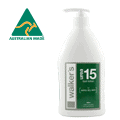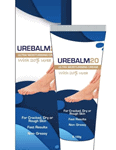Podiatrists top tips for dry cracked feet.
The skin is the largest organ, covering most of the human body and comprises of 15% of the body’s weight.
Why you get dry skin

Dry skin occurs when there is reduction in water residing in the outer layers of the skin, causing the skin to flake and crack.
When the water content of your skin drops below 10%, that’s when you will begin to see physical changes.
This may happen for various reasons such as
• A systemic illness or poor circulation
• Damage to the waterproof layers of the skin
• Changes in the way skin develops
Best home treatment for dry feet
Foot moisturizers for dry skin can be one of the best treatments for treating and preventing dry heels and feet . Skin on the feet is thicker then skin elsewhere and requires specialized creams that can penetrate this thicker skin.
Using a hard skin file or pumice stone is a great way of exfoliating excess dead skin or thick callus. They are more effective after bathing or showering, and you should take care not to damage good skin.
Devices with blades or “graters” are best avoided as they can cause unintentional damage. Similarly products such as acid peels that are supposed to work overnight, or with one application, are likely to damage healthy skin.
How to choose the best foot cream to heal dry, cracked feet
Everybody’s skin is different, so the cream that works well for one person, may bot be suitable for another.
There are three main types of ingredients which have to have the right balance for your particular skin type.
1. Barriers (occlusives) – seal the surface of your skin to prevent moisture loss. These tend to be oily substances
2. Smoothers (emmolients) – work by filling in the gaps between the damaged skin cells and helping to heal the damage and keep skin soft and flexible
3. Hydrators (humectants) – are substances which draw water into the skin, both from the dermis or internal layers, and the external environment such as the air inside your shoes or socks, or even the water in your bath or shower
Use your foot cream after washing.
You can apply foot cream whenever you want, but a beneficial time to apply one is after a shower, when the skin is still moist but not wet. Put some socks on afterward. This ensures your skin has enough time and ability to really absorb the product.
For an extra boost, put your moisturized foot in a plastic bag or cling wrap under a sock for a few hours. This prevents any moisture loss, but is best done no more than once a week.
The key to success is regular use. Your foot cream is no good when it’s in the tube or the jar!
When used on a regular basis a foot cream should help the skin become rehydrated and healthy once again – as long as you simply have dry skin. If you don’t see improvement it is a sign that something else might be causing the problem.
What if the Dry Skin Continues?
There are many other conditions that can lead to dry skin so if you don’t see improvement within a couple weeks talk to your podiatrist.
Other conditions that lead to dry skin on the feet include:
Dermatitis: Dermatitis simply means “inflammation of the skin” and it can have many causes. It also can take on many appearances. Sometimes skin is red and swollen but sometimes it just appears dry and scaly. Dermatitis will not likely respond to moisturizers and is often treated with steroid cream.
Tinea : tinea pedis or Athlete’s foot is a fungal infection of the skin. Although it often itches it sometimes appears as only dry skin. Tinea is usually treated successfully with topical anti-fungal medications containing Terbinafine. Our Solveasy spray or ointment are ideal.
Systemic Conditions: There are some systemic conditions that can cause an appearance of dry skin on the feet. There are many but good examples are psoriasis and eczema.
Weather: Dry skin is more common in winter when humidity levels and temperature decrease, and we spend longer under the warm shower! Many people find they only need to use the moisturizers in the winter.
Harsh soaps and shampoos. Many soaps and shampoos remove moisture from your skin as they are designed to remove oil.
The foot creams we recommend
Walker’s Sorbolene Lotion with Tea Tree Oil & Aloe Vera
Natural Heel Repair Serum

Walker’s Specialist Urea 15 Lotion

Premium Foot and Heel Balm

Urebalm20

Dermavive
